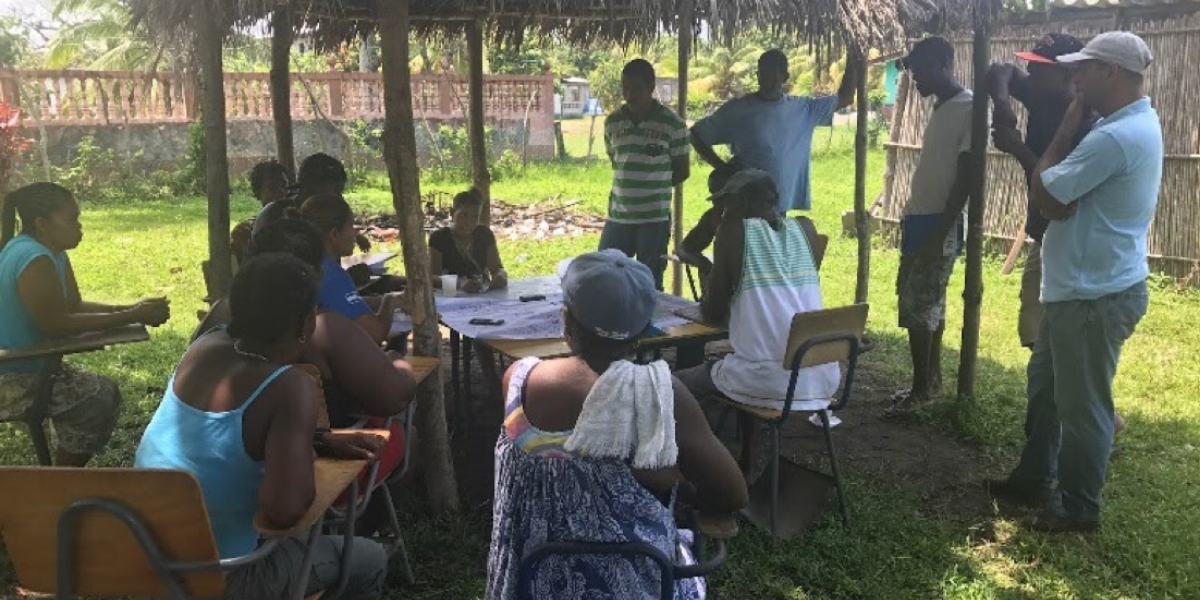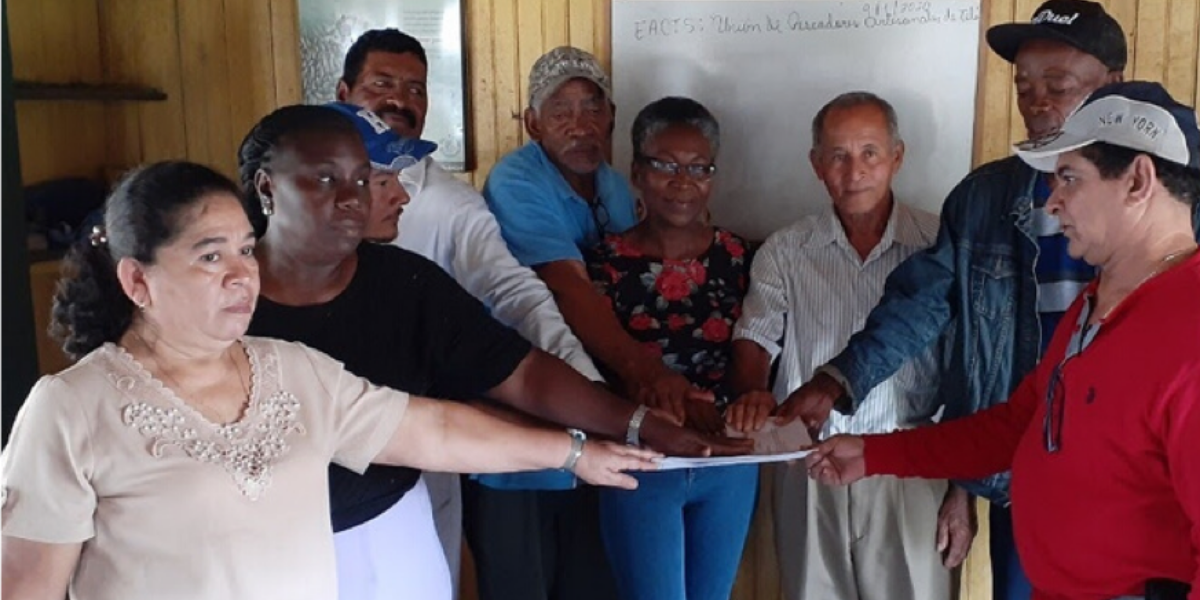During a recent interview, Dr. Antonella Rivera, CORAL’s Principal Investigator in Honduras, perfectly summed up our approach to conservation: “If we really want to make a difference with science, we have to involve the people who are most affected.”
People and communities are always at the forefront of our work to save coral reefs.
And now, Dr. Rivera and our Mesoamerican Regional Program Director Jenny Myton and Program Coordinator Julio San Martín Chicas have the research to prove that this approach works.
They recently published a five-year study about fisheries co-management in Tela Bay, Honduras in Sustainability Science. Entitled Transitioning to co-management in Caribbean reef fisheries: Tela Bay case study, the study identifies two key factors to achieve successful management of fisheries in Tela Bay, Honduras: strong interpersonal relationships and diverse, collaborative working groups.

In 2016, with fish stocks dangerously low for the multiple and distinct communities that depend on them for food security and livelihoods (90% of what is caught in Tela Bay is consumed locally), a group of Tela Bay fishers joined CORAL and our partners at the table, ready to find solutions. In the past, neither government-led nor outside approaches to fisheries management had had very much success. This time, though, survival was on the line and navigating a path forward was essential.
“Traditionally, fisheries management in Honduras was very top-down,” remarks Dr. Rivera, “meaning that the government made regulations that were sometimes backed by researchers, sometimes not, and fishers didn’t always comply because they were not a part of the process to develop those regulations and they didn’t necessarily agree with them.”
At CORAL, we believe in working from the ground up. We start with local people by identifying their needs and community leaders, and then we provide them with the tools and resources they need to protect their own resources. “As an NGO, we remain neutral observers to the process of bridging disagreements,” says Dr. Rivera. “We’re there as an external actor listening to both sides of the story.”

Over the course of five years, our team in Tela worked to build a web of interpersonal relationships between the private and the public sectors. We conducted open-ended interviews with government and non-government stakeholders, we held community dialogues across six Tela Bay fishery communities, we conducted detailed surveys about socioeconomic conditions to assess local fishing practices and fishery dependence across cultures, and we identified fishers’ perceptions regarding governance and interpersonal relationships.
The outcome was a collaborative group of local individuals and institutions committed to preserving Tela Bay. The group created a robust co-management plan to protect Tela’s fisheries that involved NGOs, community representatives, and government. And because all stakeholders are involved and have a vested interest, the plan is working—populations of previously over-exploited species, like the lane snapper, are now maintained at sustainable levels, providing benefits to both reefs and the people who depend on them.
“In this case, everyone came to the table to determine the regulations together,” says Dr. Rivera. “Because they were all a part of the process and they agreed with the regulations, they are invested in the enforcement. They designed and passed these rules, so they are also making sure that their neighbors who come from different communities follow the rules. It works.”

According to Dr. Rivera, Myton, and San-Martín Chicas, relationship-building continues to be at the forefront of this plan’s success. “Trust, one of the main aspects of social capital, takes time to build and is easily lost,” they write in their published paper. “Therefore, it is important to continue investing in schemes that promote trust such as fishers’ associations and bridging organizations.”
In the case of Tela Bay, the first step to building the successful co-management structure was to strengthen local institutions and outline governance plans. Once that was done, the power-sharing structure had a solid foundation to stand upon. And now that the plan is up and running, maintaining trust and relationships between the various organizations and entities remains a high priority. In other words, the key was to build alliances—something CORAL has been doing for nearly 35 years.
When asked whether or not her time with Tela Bay was transformative for her as a scientist, Dr. Rivera took a moment to reflect before responding. “It really changed me because my passion is to ensure that communities have a voice in the process, but I’m still a scientist and have to try to remain neutral. But as part of this process, you’re immersed; you get to know everyone, their children, what their aspirations are. You really become more empathetic to their experience and you understand what their needs are.”
That change that Dr. Rivera describes is what is so powerful about building these kinds of bridges—when you bring people together and ensure everyone has a spot at the table, it changes people. It builds the kind of trust and empathy that leads to collaboration, and ultimately leads to the successful management of coral reefs.

